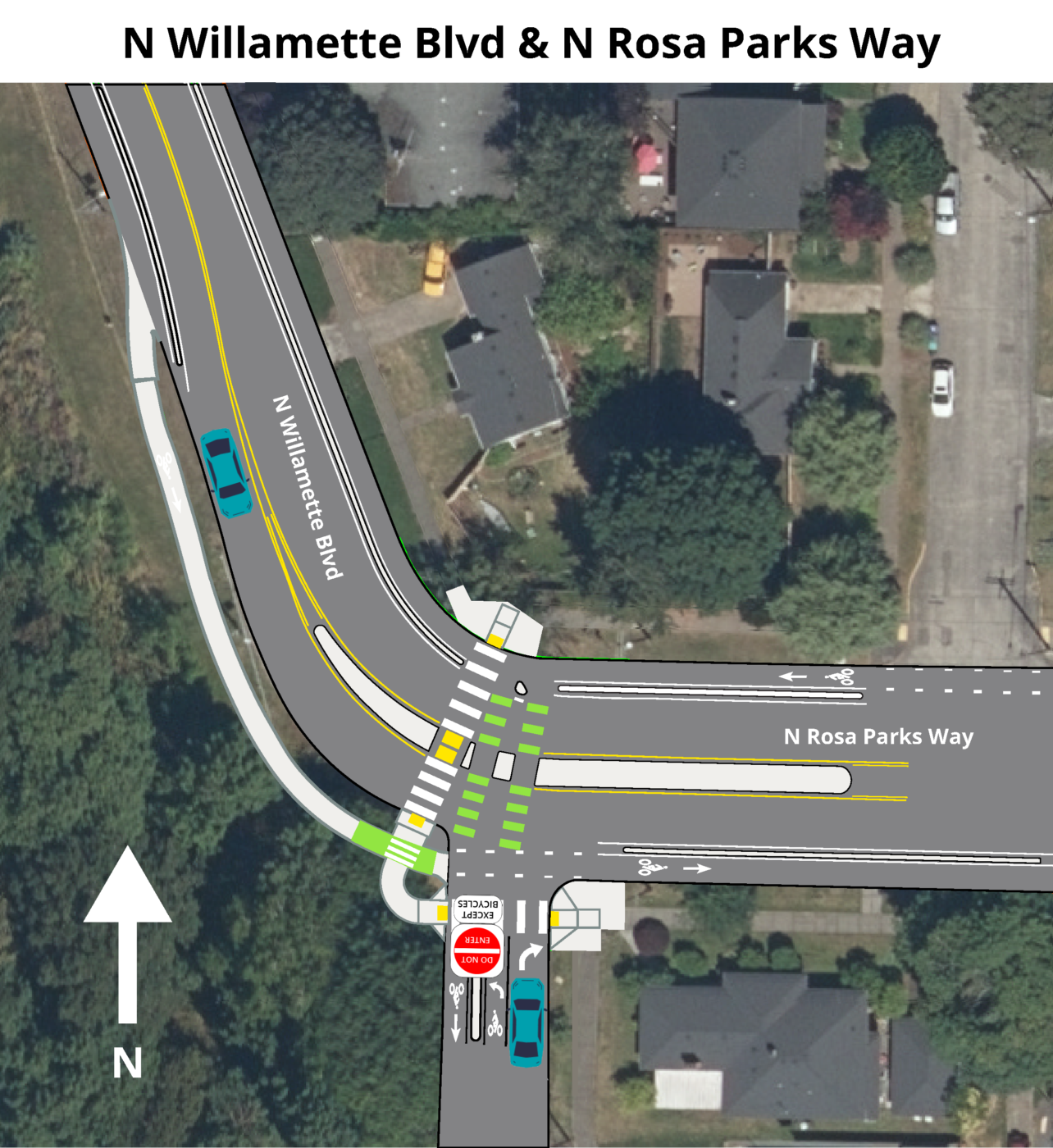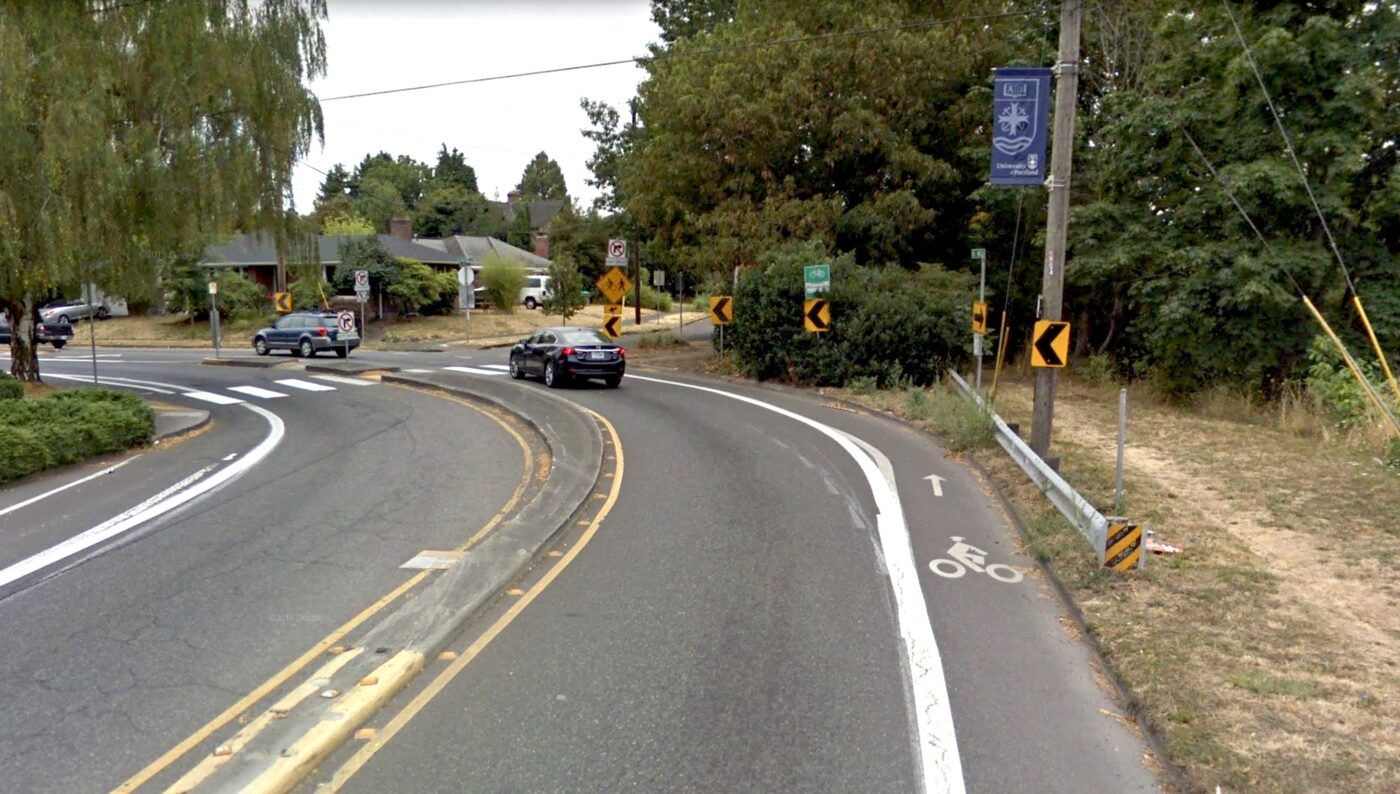
The Portland Bureau of Transportation just revealed new designs for North Willamette Boulevard that will have a huge impact on this vital north Portland cycling route. In the coming years the street will be transformed with physically protected bike lanes, floating bus islands, shorter crossing distances, safer intersections, and even a new bike path to navigate through the notorious Willamette/Rosa Parks curve.
And with the extension of the bike lane north of Alma coming as early as spring of next year, there’s a lot to be excited about.
Here’s the latest…
PBOT has reached the 30% design plans milestone for their North Willamette Boulevard Active Transportation Corridor project, a $6.1 million investment to make biking safer and easier on a three-mile segment of Willamette between North Rosa Parks Way and N Richmond Ave. The project was awarded federal funding (via Metro) to the tune of $4.45 million and is part of a host of changes PBOT wants to make to encourage more people to bike and walk in north Portland.
The 30% design milestone is where PBOT planners and traffic engineers go from conceptual plans to a clearer picture of what we can expect once the concrete is dry. This morning they revealed new design drawings for several key intersections.
One that’s particularly notable is how they plan to improve bike safety at the corner of Willamette and Rosa Parks Way (above). That corner is notoriously tight for bike riders. In 2019, activist Sam Balto garnered headlines when he laid out red cups to demonstrate how many car drivers illegally veer into the bike lane through the corner.
To remedy this problem, PBOT plans to build a paved path for southbound bike riders. The path would leave Willamette Blvd before the turn and then re-enter the street where it straightens out into the existing protected bike lane on Rosa Parks Way. Doing this will allow PBOT to remove the current bike lane striped in the southbound direction, which gives them more space to add physical protection to the northbound lanes.
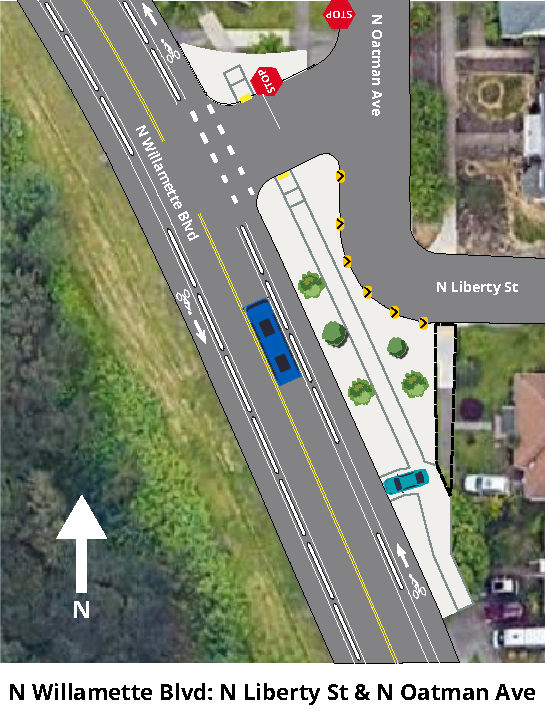
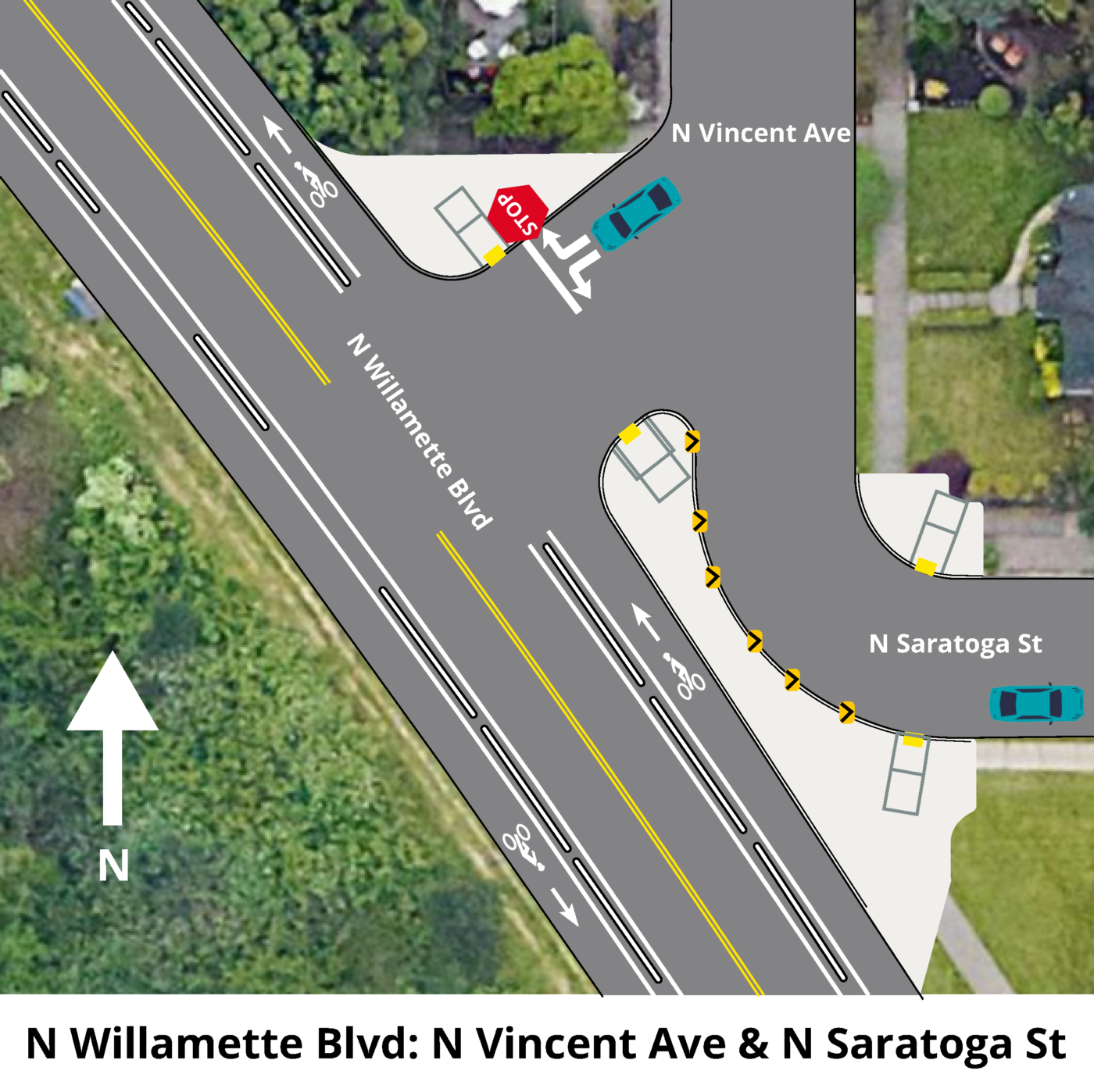
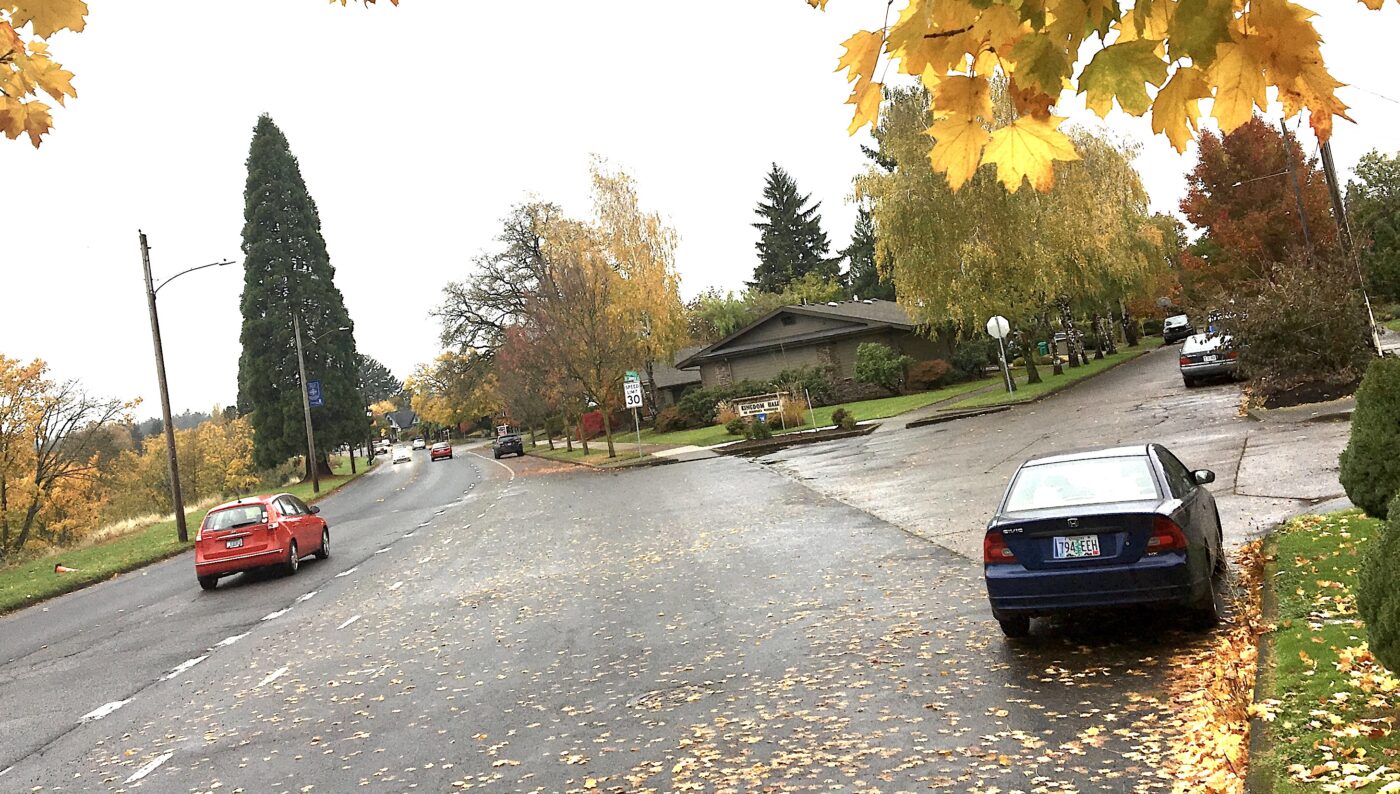
Other significant changes will happen at two intersections with Willamette just north of Rosa Parks: N Liberty/Oatman and N Saratoga/Vincent. Both intersections are currently nearly 120-feet across at their widest point. This means drivers can take corners very fast and the vast open space invites dangerous behaviors. PBOT plans to dramatically change both intersections by extending the sidewalk to create long peninsulas into the intersection. When the project is complete, the opening for drivers will be around 20 or so feet (width of two standard lanes). This will have a dramatic impact on how the street is used.
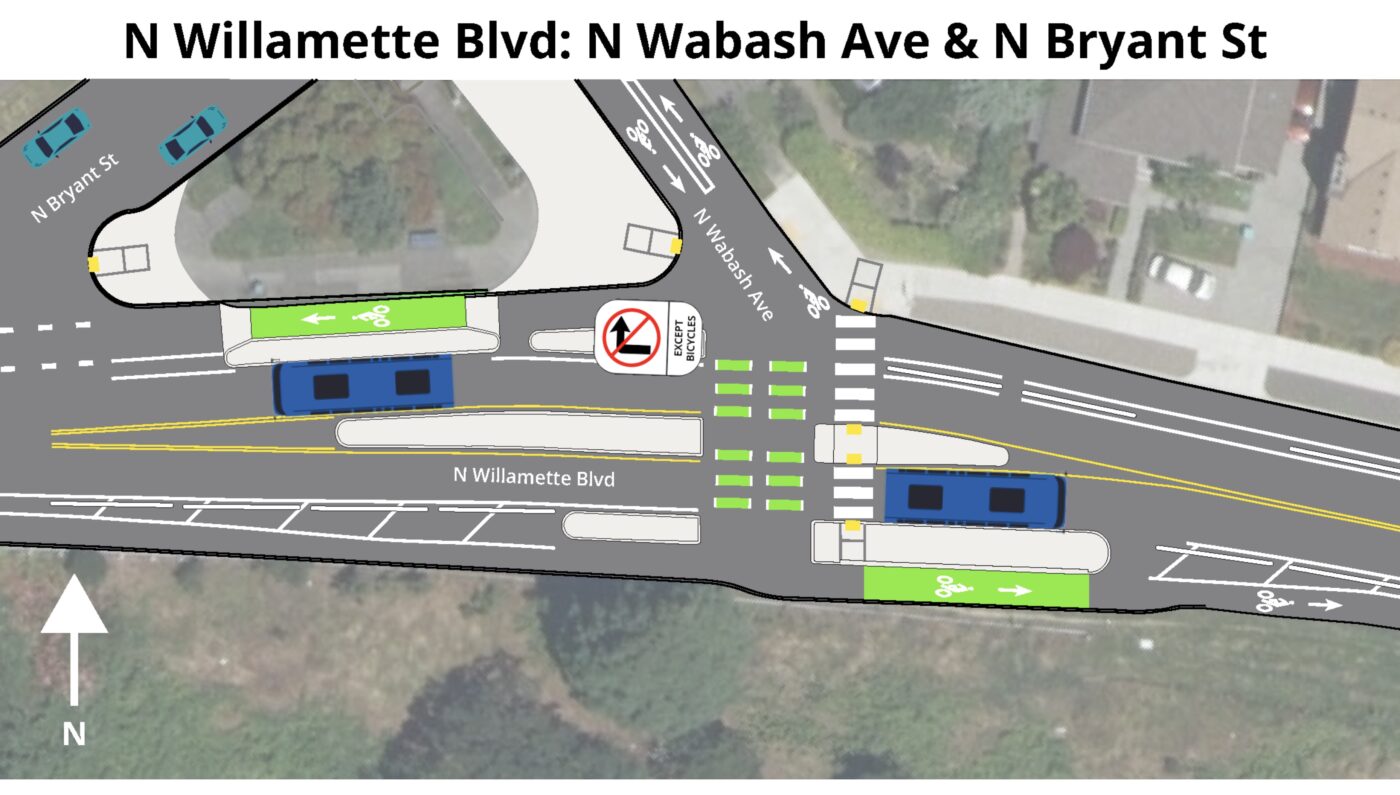
Continuing north on Willamette the new plans show the N Wabash/Bryant intersection will also get a makeover. PBOT will build floating bus stops where the bike lane goes behind the stop. This will allow TriMet drivers to stay in the lane of traffic and will speed up service. The addition of the floating medians will also further calm drivers as it will make the road space even narrower.
Another nugget revealed today is that PBOT will prohibit car use — but maintain two-way bicycle access — on the short block of Wabash between Bryant and Willamette. The plans show large curb extensions on all sides of the existing traffic island (where the bus stop is), as well as a curb extension on the northern corner of Willamette and Bryant.
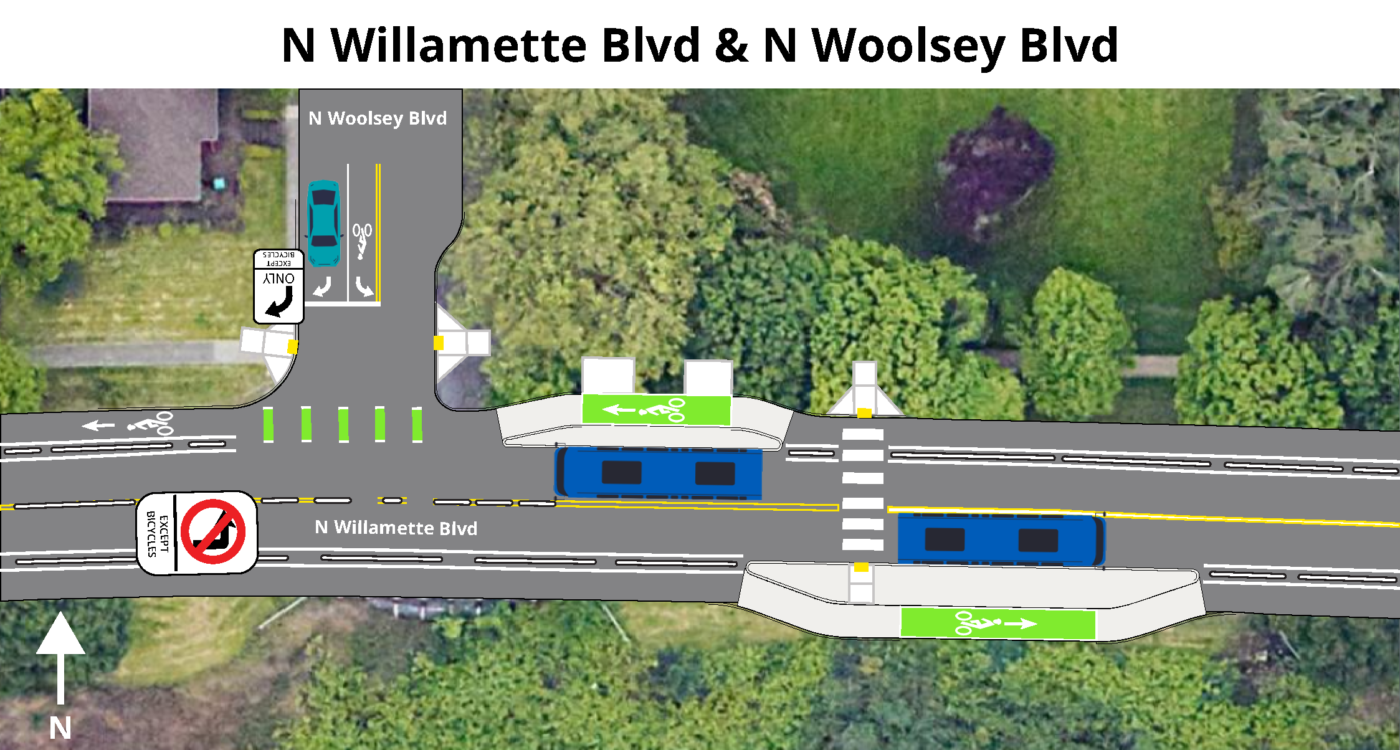
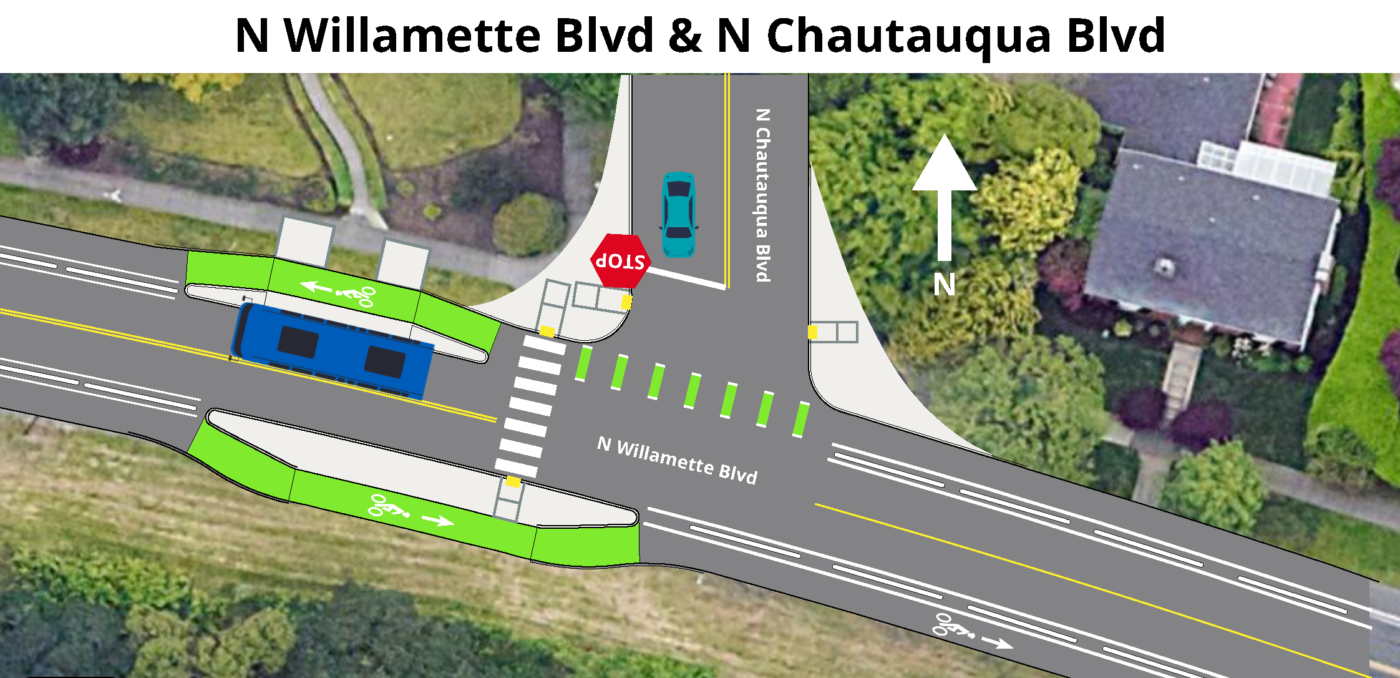
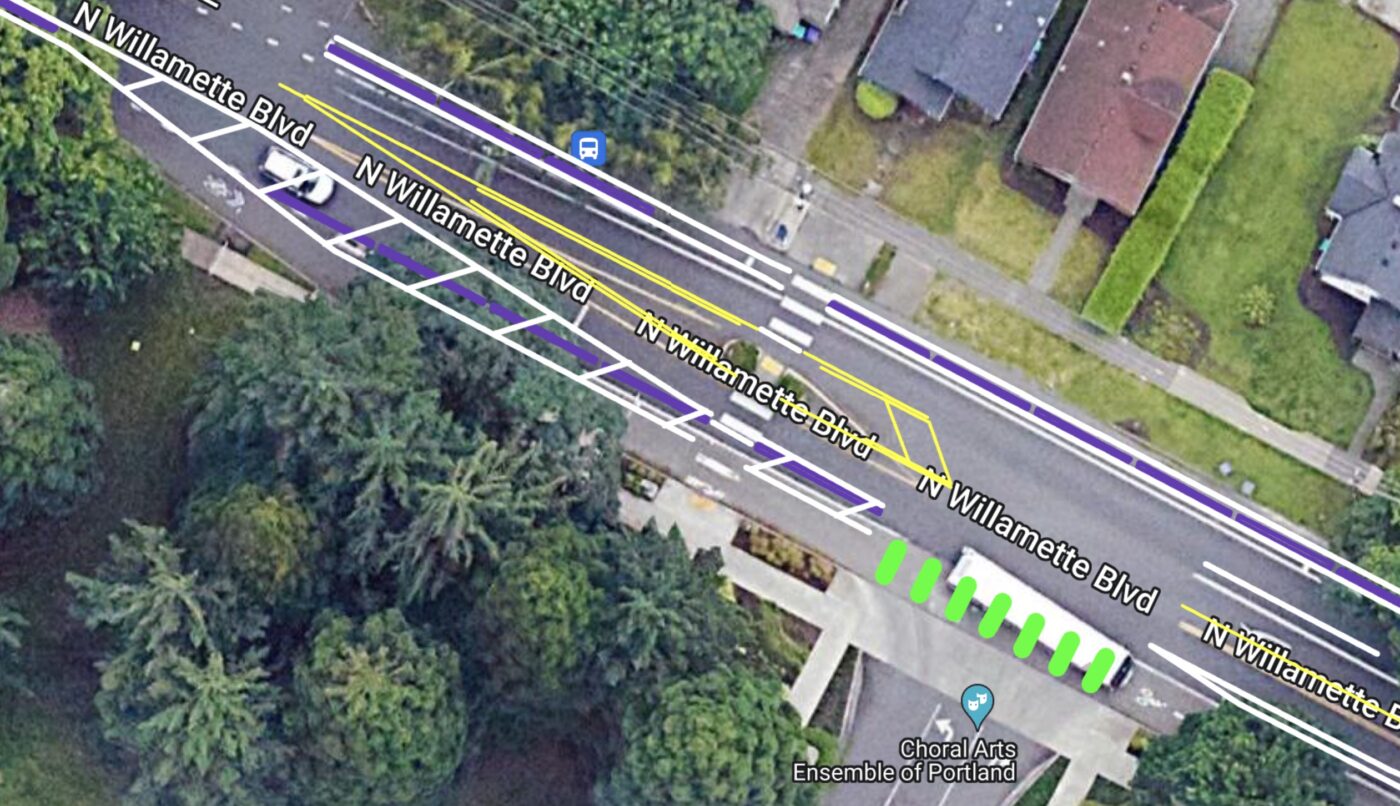
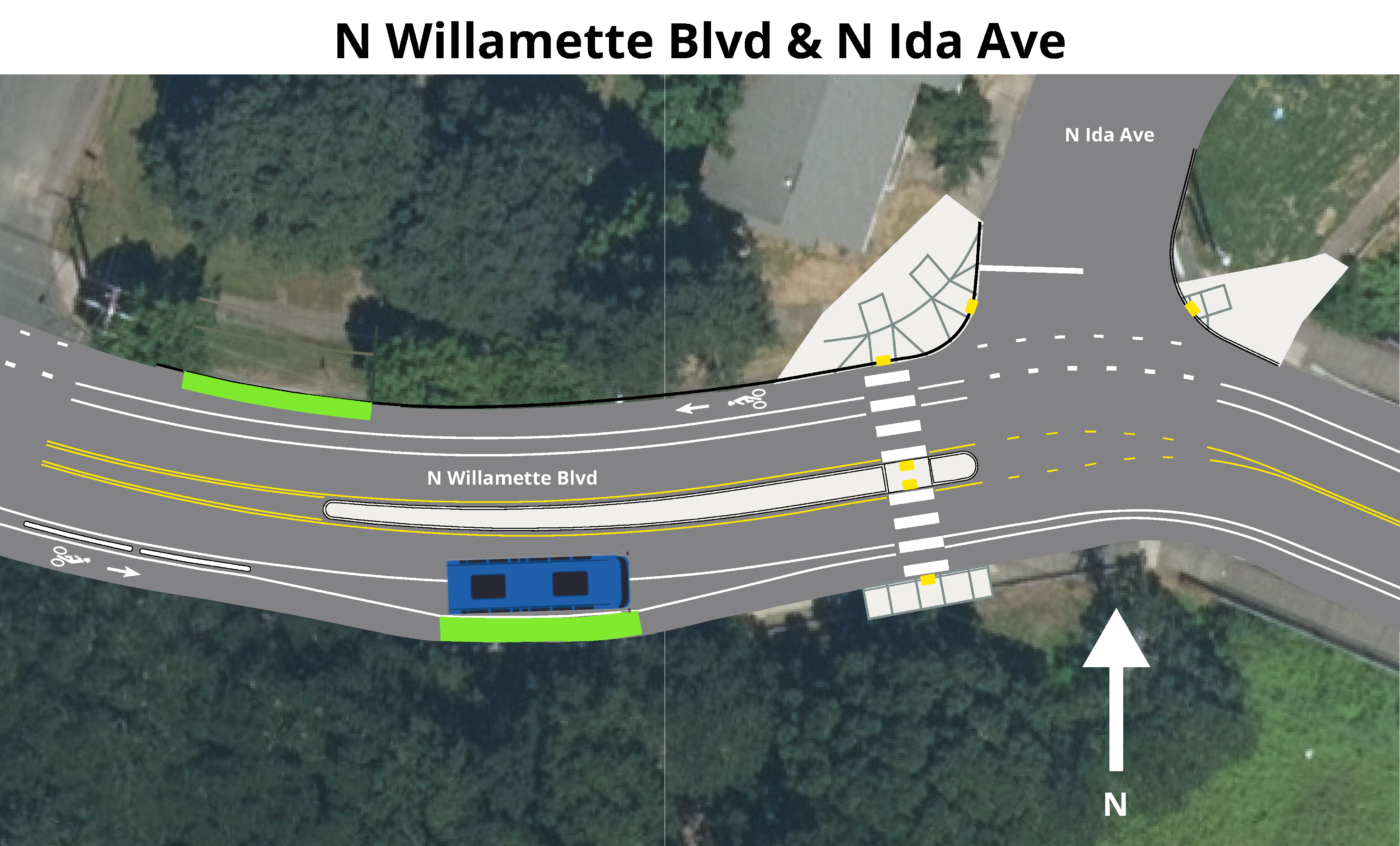
Curb extensions and floating bus islands will also be added at Willamette and Chautauqua. The intersection with Woolsey (at Columbia Park Annex) will also get floating bus stops and a new crosswalk for the stop on the south side of the street.
At the entrance to University of Portland, we’ll see a new striping pattern that will create a larger buffer between southbound bike riders.
Further north at N Ida (the railroad cut) the plans call for a center median and curb extensions to calm down the intersection and facilitate safer bus stop access.
And keep in mind that the entire three-mile corridor will have concrete curbs protecting the bike lanes. The 30% designs also show exactly where the curbs (colored purple in the plans) will go and where there will be gaps. Below is a map of the project with new plans overlayed published by PBOT this morning.
While this project won’t be complete until 2026, PBOT will get started on some of the plans before then. Next summer, a planned paving project on the 0.7-mile segment of Willamette between Portsmouth and Carey will give PBOT the opportunity to re-stripe the lanes to match what’s planned for the future project. That also means next year PBOT will remove all current on-street parking on this stretch (except for the south side of the block of N Van Houten to N Portsmouth, where the parking is inset).
Also in spring or summer 2024, PBOT will extend the existing bike lanes — which currently end right after the railroad cut at N Alma — all the way to Richmond. “This missing piece of the bike network was identified as a strong community desire during the North Portland in Motion planning process,” PBOT says. The plan is to stripe a curbside, unprotected, buffered bike lane (which also means the on-street parking will be removed) and then come back and fill that buffer with a concrete curb as part of the larger project in 2025.
PBOT plans to finish the Active Transportation Corridor project design by winter 2025 and begin construction that summer. The project is expected to last 12 months.


